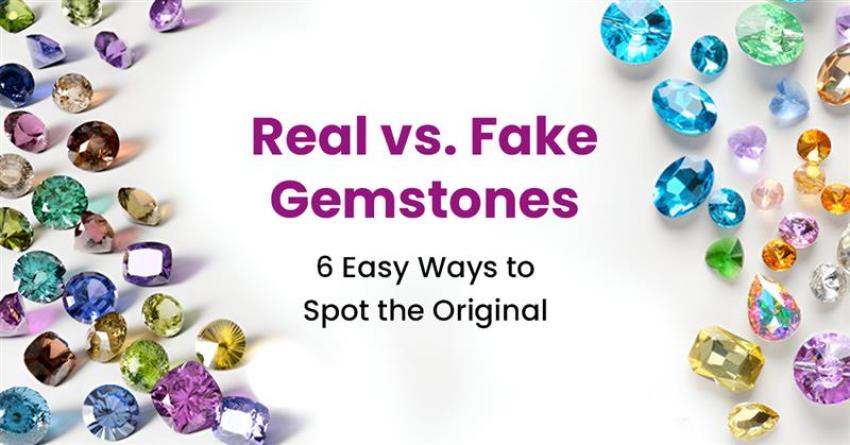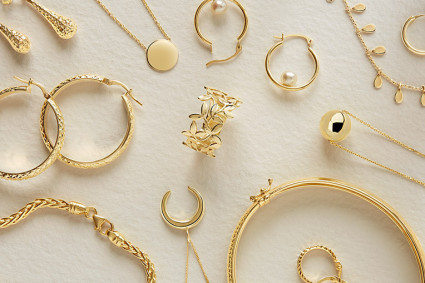
Authenticity is the key to value in the world of gemstones. The difference between fake and real gemstones is becoming harder to distinguish with the naked eyes as synthetic technologies progress. It is important to know how to recognize a genuine stone, whether you are investing, choosing a gemstone for spiritual reasons or aesthetics, or selecting a gift. Here are 6 expertly tested and trustworthy methods for determining a gemstone's authentic and avoiding deceptive imitations.
1. Examine internal inclusions with Magnification
Each natural gemstone has internal fingerprints that were formed by intense geological pressure millions of years ago. These are called inclusions.
Natural Inclusions can include small fractures, bubbles of gas, mineral crystals or feather-like structure.
Fake or synthetic gemstones often appear too perfect or show air bubbles, a sign of fake glass.
Use a 10x jeweler’s loupe, or a gemological microscope to examine the stone.
Natural flaws or uneven patterns
Uneven growth lines
Mineral crystal clusters
A stone that is completely clear could be made of glass or a replica grown in a laboratory. Natural stones are rarely perfect, and that is their trademark.
2. Use the Mohs Scale to perform a hardness test
The Mohs scale classesifies minerals based on their resistance to scratching. The hardness of real gemstones is consistent with the nature of their material.
Gemstone
Hardness (Mohs scale)
Diamond 10
Sapphire 9
Emerald 7.5 - 8
Quartz 7
Opal 5.5 - 6.5
Glass (fake glass) 5 - 6
Test:
Scratch the gemstone lightly with a material that is known to be hard.
A real harder gemstone shouldn't be scratched with a softer stone.
Do not use this test for set stones or other valuable stones. They may be damaged.
This test is often a fail for fake gemstones such as colored glass and cubic zirconia, which show visible scratches and wear.
3. Assess Color Saturation & Zoning
The color of a gemstone is an important feature for identification. Natural gemstones often exhibit:
Uneven color zoning
Color variations are slight.
Surfaces with inconsistent saturation
As an example:
The ruby may have patches of deeper or lighter red, as well as subtle undertones.
The fake ruby is usually made of colored glass and appears bright, uniform and unnatural.
Search for:
Depth in hue Natural stones are different because they absorb light differently. This gives them a deeper glow.
Natural Zone: Lines and bands of color are signs that a formation is genuine.
To accurately assess color, use natural daylight or an equivalent lamp.
4. Compare weight and specific gravity
The weight of the gemstone is a key factor in identifying genuine gemstones from fakes. Each gemstone has its own density or gravity.
The weight of real gemstones is heavier compared to their glass or synthetic counterparts.
Glass imitations feel light for the volume.
Test:
Compare the gemstone you have in your hands with another that is of similar size and has been authenticated.
For precise measurements, professionals use a hydraulic balance or electronic scale.
This test is effective with fakes such as glass, resin, or moissanite which weigh less than real stones like rubies, sapphires or diamonds.
5. Request a Gemstone Certificate
A genuine seller will always offer a certification by a respected authority. This certificate verifies that:
Origin
Treatments (heat, dye, coating)
Clarity of Cut, Color and Carat
The top certification bodies include
GIA
IGI
GII
AGS
When purchasing, always request and double-check the certificate.
High-value gems like emeralds, rubies, diamonds, sapphires
Birthstones used for spiritual or astrological purposes
Gemstone Jewelry for Gifting or Resale
The gold-standard for gemstone authenticity, certification adds value and credibility.
6. Use thermal conductivity and UV light tests
Use the same scientific tools that gemologists use to verify your findings.
UV Light Test
Expose gemstone to UV (UV) light.
Under UV light, many gems like Diamonds, Fluorite, and Sapphires will fluoresce in a specific hue.
Fake stones can either display incorrect patterns, or fail to fluoresce.
Thermal conductivity Test
Use a thermal conductivity tester or diamond test.
True diamonds conduct heat quickly and pass this test.
Fakes, such as cubic Zirconia and Glass, fail to dissipate the heat quickly. They are easily detectable.
Online, you can find affordable tools that make it easy to test your home appliances before buying a large item.
Tips on Buying Genuine Gemstones
Always buy from Reputable Sellers
Select jewelers or stone dealers who:
You are members of recognized business organizations
Give guarantees in writing and return policies
Provide clear transparency on gemstone treatments
Ask about Enhancements
Treatments are often used to improve the color or clarity of gemstones. Some of the most common include:
Heat Treatment
Oil filling (for emeralds)
Irradiation
They do not make a fake gemstone, but they should be always disclosed by buyers.
Conclusion - Invest in Knowledge and Not Just Beauty
Beauty is only skin-deep when it comes to gems. Real and fake gemstones are distinguished by their weight, color, structure and source. With the right tools, and a little awareness, every buyer can learn to identify authentic gemstones.
Always demand transparency. Trust your eyes. Verify with science. A protected buyer is an informed one.


